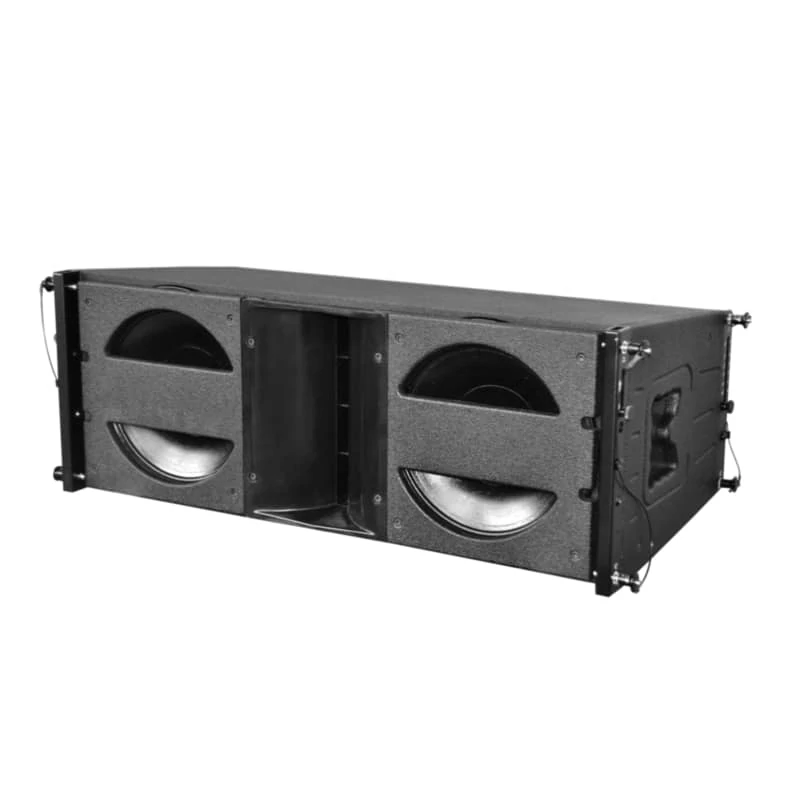
A "line-array" refers to a speaker setup that comprises several speaker units with identical properties, arranged vertically to simulate a linear sound source. Unlike conventional speakers that serve as a point source and disperse sound over a broad angle in both the horizontal and vertical planes, a line-array speaker disperses sound minimally in the vertical plane. Consequently, these systems offer the advantage of reduced sound pressure attenuation over distance. So as senior insider involving speaker industry, today we show you total difference and excellent features between both of standard speaker and line-array types below.
Speaker Standard Edition (point source)
As sound waves travel, they move in a spherical pattern, extending both horizontally and vertically. As the distance from the sound source doubles, the surface area of the sound wave propagation front expands by a factor of four. This means that the sound intensity per unit area decreases by a factor of four, and the sound pressure level diminishes by 6 dB.
Speaker As Line-array (line source)
Sound waves propagate in a cylindrical shape, expanding horizontally but not vertically. As the distance from the source doubles, the surface area of the propagation front expands by a factor of two. Consequently, the sound intensity per unit area is reduced by half and the sound pressure level decreases by 3 decibels.
Because the individual speakers are aligned, they can direct and focus the sound in a specific area. Line Array Speaker This makes line arrays very effective for long distances and outdoor use where focusing the sound is important.
The vertical arrangement of speakers allows for beam shaping to control the vertical coverage angle of the sound. This is done through time delays and phase shifting between the individual speakers.
Line arrays can provide narrow or wider coverage angles depending on the design. Narrow coverage arrays are often used for long throws while wider coverage arrays are used for more general purposes.
Since there are multiple drivers, line arrays can produce higher fidelity sound and higher maximum sound pressure levels compared to single speaker systems.
First advantage - Sound reinforcement that maintains more consistent sound pressure
This speaker design minimizes the effects of distance on sound pressure, enabling clearer and more consistent sound amplification. As a result, sufficient sound pressure can be supplied to the rear audience areas without the front-stage area becoming overly loud.
Standard speaker
Greater attenuation over distance occurs - namely, sound pressure diminishes by 6 dB for each doubling of distance. Consequently, sound pressure is more significantly impacted by distance, resulting in excessively loud volume in front-of-stage areas.
Line-array speaker
Less attenuation over distance occurs - specifically, sound pressure decreases by 3 dB for each doubling of distance. As a result, sound pressure is not impacted as greatly by distance, so front-of-stage volume does not need to be excessively loud.
Clear sound reinforcement can be achieved by reducing unwanted reflections, ensuring amplification is distinct even in reverberant spaces.
Standard speaker
Since sound also disperses vertically, reflections occur off roof and floor surfaces. These reflections are heard as reverberation, making the amplified sound less clear.
Line-array speaker
However, when sound disperses minimally vertically, there are fewer reflections off roof and floor surfaces. The sound travels directly from the speakers to the audience with minimal reflections. As a result, the reinforced sound is clearer overall.
When a defined sound pressure needs to be achieved at a given distance, a line array speaker system - which combines the sound outputs of multiple speaker units - requires less output energy per unit compared to standard point source speakers. As shown in the lower diagram, a microphone close to the array will mainly capture energy from the nearest units. The total incoming energy will thus be significantly less than with standard speakers, meaning feedback is less likely to occur.
Standard speaker
• The microphone receives a greater amount of incoming energy.
• The amplified sound originates from a single point, so the energy is not dispersed.
Line-array speaker
• The microphone receives a lesser amount of incoming energy.
• The amplified sound comes from multiple speaker units, and the total energy is divided among them.
• The microphone only detects energy from some of the speaker units, not all of them.
